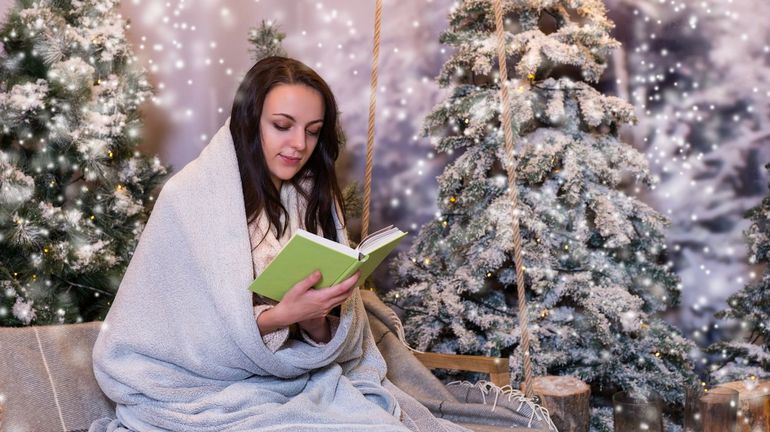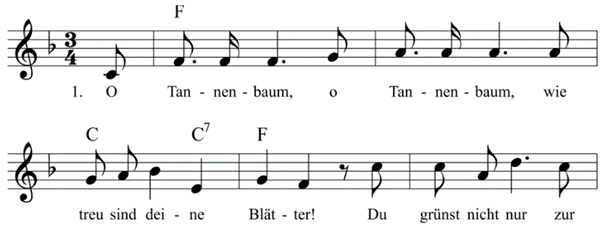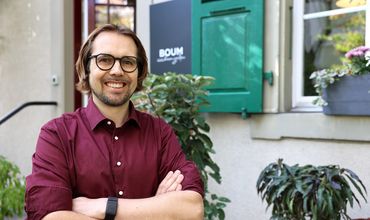For IP professionals
This is the portal for professionals working in the field of intellectual property. Here you'll find direct access to all necessary resources.
Quick links
Tales of Christmas IP
Christmas is just around the corner. And even during the festive season, intellectual property has a part to play. The IPI’s very own Santa Claus has a few surprising and amusing tales to tell about trade marks, patents, designs and copyright.

All is bright (and patented)
Your beautifully decorated Christmas tree is standing in all its glory in the living room. And if you don’t have cats, it might stay that way. You could even top it off with an ‘internally lit Christmas star’. Once Christmas is over, the star can be easily disassembled and stored away. The inventor Franz Körner from Ebnat-Kappel was granted a Swiss patent (CH274878A) for his lightbulb moment in 1951. This gave him the exclusive right to his innovation for up to 20 years. In return, he disclosed in the patent specification how the invention worked.

The cookie with two humps
Once the tree’s been decorated and the whole family is pleased, you’ve earned yourself a treat. In Switzerland, Christmas cookies often take the shape of a star, a moon or a heart. Those with more refined tastes might want to look away now. According to the World Intellectual Property Organization’s Global Design Database, some rather unorthodox cookie cutters have been protected as designs in the past.
Whether this particular shape meets the legal requirement for novelty is questionable. But since this isn’t checked by most national IP offices, the designer still benefits from the registration. Let’s hope that the cookies aren’t as dry as the desert and that they taste like a gift from the heavens.

Protecting a patent cookie recipe
While tucking into a camel cookie, you might ask yourself whether the delicious recipe can be protected? Unfortunately, the experimental bakers among you are going to be disappointed. The recipe itself can’t be protected. But you might be able to protect the method for turning the baking mix into the final product (i.e. how it got from A to B). That’s a process, which can generally be patented, because it constitutes a technical solution to a technical problem, which is a requirement for patent protection.
If you’re granted a patent, please remember that, in return, you must disclose how the process behind the incredible cookie works. If you don’t want to do that, you should keep the recipe a secret.

The Advent poem and copyright
Rather than facing strategic choices between patents and trade secrets, we’re much more likely to be confronted with contemplative, cheerful or funny poems during the festive season. There are even some for those with a dark sense of humour:
“The night turns blue. The stars are twinkling. Small snowflakes are softly sinking. On the fir tree’s green top, a little peak piles up. (..) On this enchanting night, has she the forester slain. When it came to housework, he had long been a pain(...)”. A translation of ‘Adventsgedicht’ by Loriot, 1969.
Some families might still keep up the Swiss tradition of children reciting a Christmas poem in front of the decorated Christmas tree. As long as it’s just family members listening, you can recite any poem without infringing copyright because this is considered private use. However, things get trickier in terms of copyright if you decide to play background music at your club’s or company’s Christmas party.

‘O Christmas tree’ – who can sing this song?

Some families might also sing Christmas classics like ‘O Tannenbaum’ (‘O Christmas Tree’). The song goes back to the 16th century, but two verses were added in 1919 and 1924 by Joachim August Zarnack and Ernst Schütz. The work is no longer protected by copyright because, in Switzerland, copyright applies during the author’s lifetime and the 70 years after their death (50 years for performances). The sheet music is therefore free to use, and there’s nothing preventing anyone from performing it in a private setting.
However, a word of caution: copyright still applies if the song’s played by an orchestra or other groups. Such performances are protected by copyright because they’re considered new interpretations. For example, the performance by the Dresden Philharmonic Children’s Choir linked below. Its interpretation is protected for 50 years from the first performance. It can’t be used beyond the scope of private use without the choir’s permission.
Shortening the Christmas period
Over the holidays, one lavish feast rolls into the next, which might lead some people to be concerned about their figures. Saint Nicholas is particularly at risk – the temptation starts for him on 6 December. But nowadays, he’s got options. A whole industry has been built up on weight loss promises, supposedly sustainable diets, digestive aids and pick-me-ups. Saint Nick has jumped on the bandwagon too. How else would you explain NIKOLAUSNATURE-VITALPERFORMER? This is an international trade mark (IR-1527393), which is also protected in Switzerland and was registered for pharmaceutical preparations, among other products.
Those who just can’t take it any more can turn to biscuits, confectionery or tea sold under the Swiss trade mark WEIHNACHTSZEITVERKÜRZER (CH-567177) – literally ‘Christmas time shortener’ in English. Whether the sweet treats actually have the suggested effect is doubtful. But at least that doubt saves the trade mark from being refused, because terms that describe a possible characteristic of the product fall under the grounds for exclusion from protection. Either way, the Christmas calendar remains the same.

Thank you for your interest in our blog!
On behalf of all the staff at the IPI, we wish you, dear reader, very happy holidays with your loved ones. We look forward to helping you to protect your innovations and creations again in the new year.



